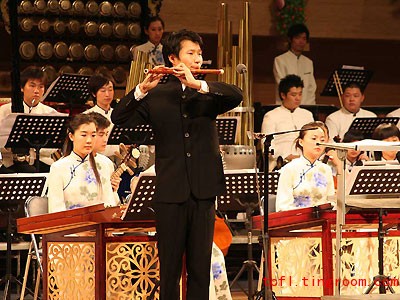For many Chinese people, the melody of the transversely-played bamboo flute or Dizi in Chinese, calls to mind a picture of a country cowherd riding a bull in the spring breeze. The gnarls in the long bamboo pipe have been eliminated. There are one blowing hole, one affiliated hole and six sound holes. The blowing hole is the first hole of the flute, where the air is blown in to make sounds. Next one is the affiliated hole, which is covered by the membrane of the bamboo or bulrush.
The flute has a rich performance spectrum. Not only can it play loud and sonorous tunes, but also cheerful dancing music and peaceful ditties. In addition, it can imitate various sounds in nature such as the twittering of birds.

The air makes the membrane vibrate, which can produce clear and smooth tones. Although the structure of the flute is simple, it has a history of more than 7,000 years.
About 4,500 years ago, designers began to make flutes with bamboo instead of bone. During the reign of the second emperor of the Han Dynasty in the 1st century BC, the flute was also called Hengchui, or literally ‘blowing horizontally.' From the seventh century on, the hole covered by membrane has been used. With the development of free verse of the Song Dynasty and the music of the Yuan Dynasty, the flute became the main part of the accompaniment, and was also indispensable in folk and ethnic dramas.




